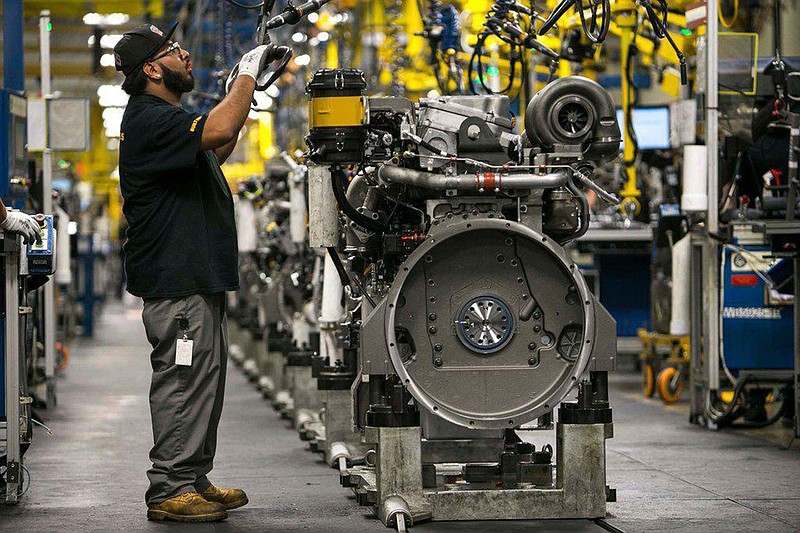The Texas manufacturing and service sectors continued to bounce back in April amid the COVID-19 vaccine rollout and the reopening of the economy.
That's the takeaway from two recent Federal Reserve Bank of Dallas surveys, which show both sectors are growing at a solid clip.
"Recovery in the Texas manufacturing sector remains in high gear, with measures of demand, employment, wages and prices reaching new highs in the survey's 17-year history," said Emily Kerr, Dallas Fed senior business economist. "With this on the heels of other headline indexes reaching historical highs last month, it seems we are seeing unprecedented growth in Texas manufacturing."
Texas manufacturers looking to hire
Even with those positive indicators, 46% of manufacturers surveyed reported that their current revenue is still down from a typical April, so there remains a way to go before the industry recovers to pre-pandemic levels of activity, Kerr said.
According to those who responded to the anonymous survey:
The production index fell 14 points to 34.0, a reading still well above average and indicative of robust output growth.
The new orders index rose eight points to 38.5, its highest reading on record.
The general business activity index came in at 37.3, up eight points from its March reading.
Labor market measures showed strong growth in employment and work hours, with the employment index reaching an all-time high.
Texas firms expect to raise wages 4.7% this year on average, which is higher than average wage increases reported by survey respondents over the past four years, Kerr said.
"Among the 60% of firms currently trying to hire or recall workers, the top impediments to hiring were noted as lack of applicants, generous unemployment benefits and lack of hard skills," Kerr said.
Texas produces about 10% of total manufactured goods in the United States, ranking second behind California in factory production.
Optimistic outlook for Texas hospitality, service sectors
Meanwhile, Texas service sector activity in April increased at its fastest pace since late 2014, according to business executives responding to the Texas Service Sector Outlook Survey.
The survey takes the pulse of executives in the service industry, which includes retail, hospitality, professional and technical services and other businesses.
"Optimism surged among businesses, with the company outlook and general business indexes rising to their best readings since the survey's inception in 2007," said Christopher Slijk, Dallas Fed associate economist.
However, Slijk said, retailers saw a decrease in sales, continued inventory declines and significant upward pressure on prices.
The state revenue index, a key measure of the service sector, rose more than four points to 26.1, a six-year high, the report said.
Positive numbers in the index reflect expansion, while negative numbers reflect contraction. A March 2020 reading of minus 66 was the lowest since 2007.
The general business activity and outlook indexes rose to 34.9 and 29.2 respectively - both record highs for the survey.
Private service-providing companies account for nearly 70% of the state's economy and employ about 8.6 million workers, according to the Dallas Fed.
The Dallas Fed survey includes a retail section that is based on information from respondents in the Texas retail and wholesale sectors only. According to those who responded to the survey:
The sales index remained positive but shed 10 points to 9.7.
Labor market indicators rose to pre-pandemic highs, and the employment index increased to its best reading since 2018.
Price pressures surged, with input prices increasing at rates last seen in 2011 and growth in selling prices at record highs.
Retailers remained optimistic, with the company outlook index pulling back but remaining in firmly positive territory.
For this month's survey, executives in the manufacturing and service sectors responded to questions on the impact of COVID-19, as well as wages, prices and hiring trends.
More than 60% of those surveyed said they are currently trying to hire or recall workers. Of those, 67% said a lack of applicants is an impediment to hiring, while 48% said unemployment benefits were creating hiring difficulties.
"The challenge now is finding enough new employees," said one respondent, who works in plastics and rubber products manufacturing. "Our recovery came quicker than anticipated, and we need more people as quickly as possible."
A respondent in the financial services industry said, "Pre-COVID we had around 700 to 1,200 applicants a month. We are lucky now if we get 20 applicants a month. The hiring environment is dramatically different than a year ago. We can grow at a faster pace on the sales side but are unable to do so because we cannot find the employees to service the clients."

